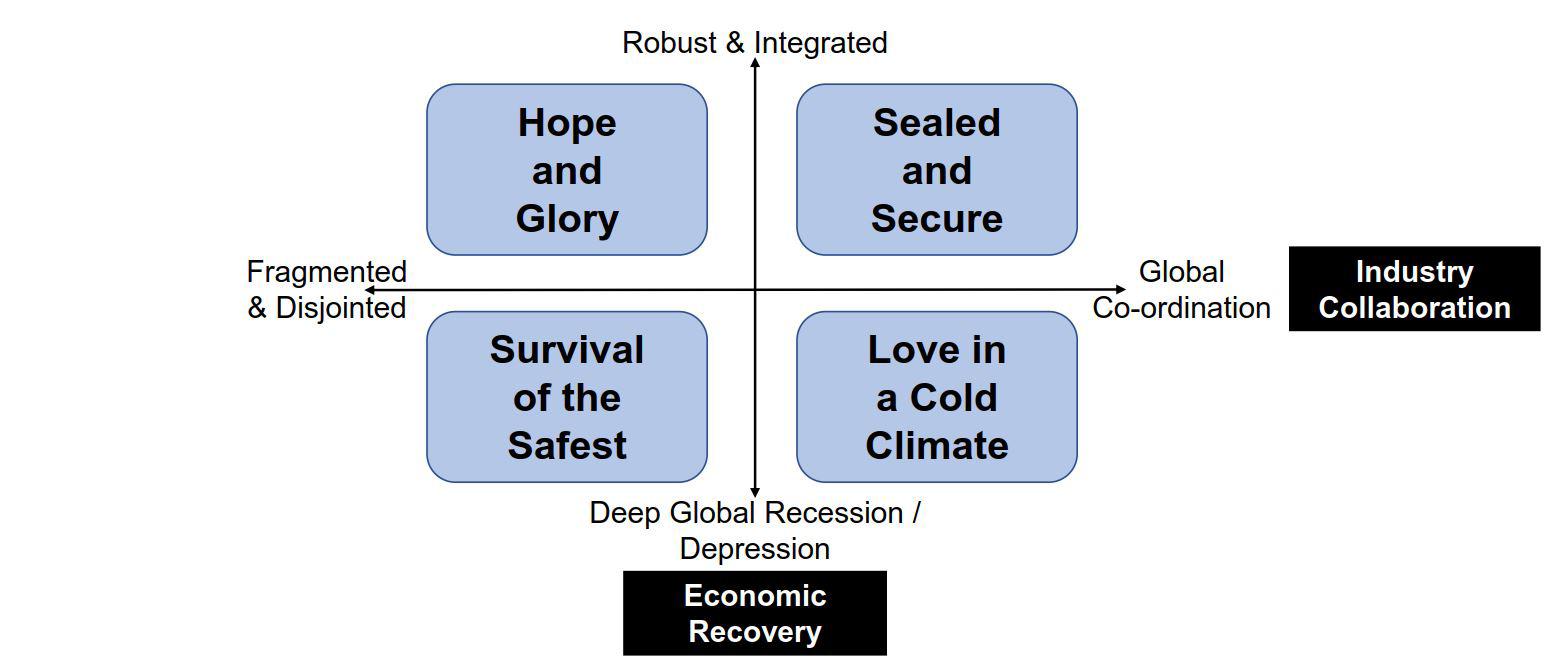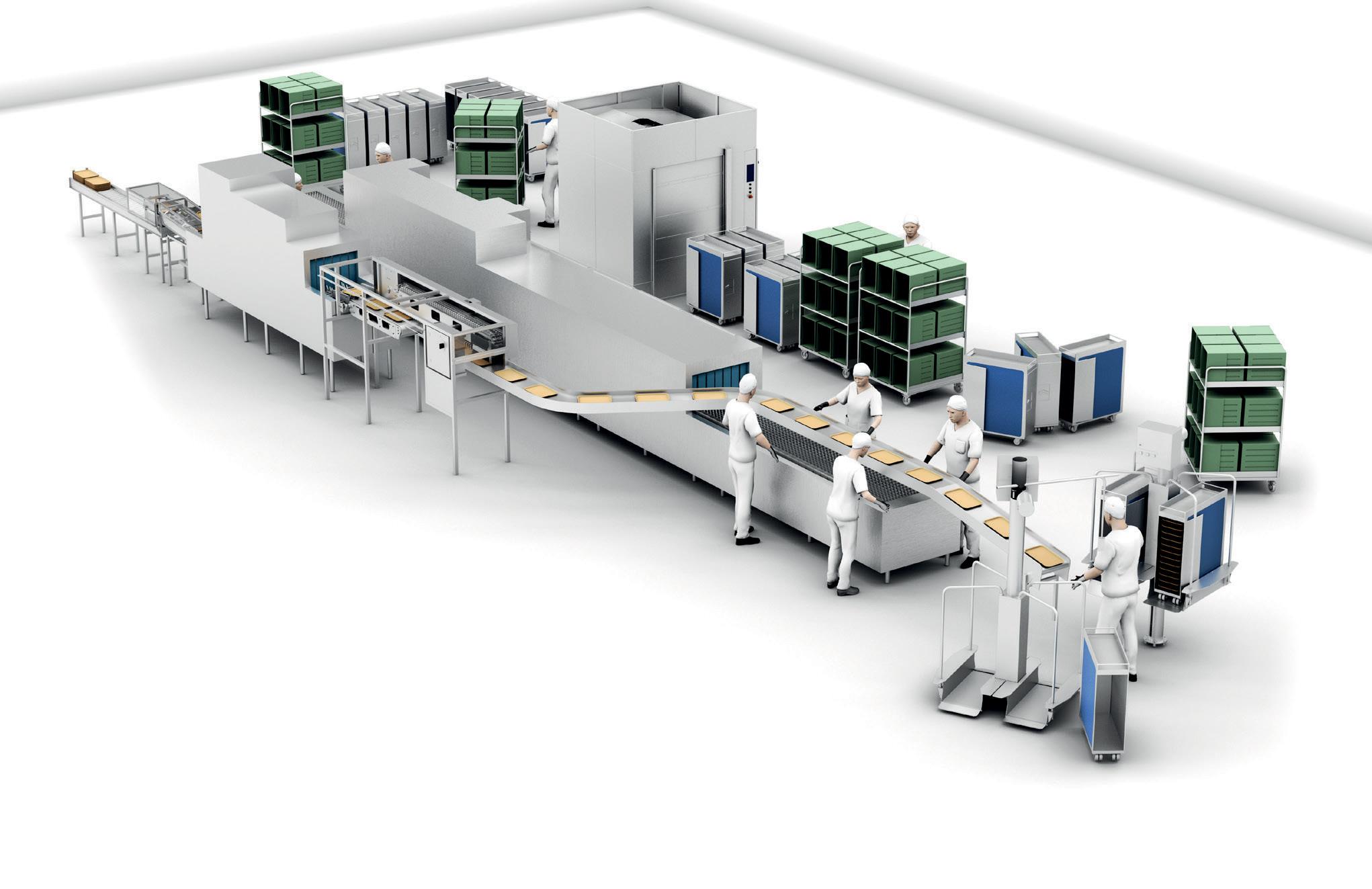
4 minute read
FAST FUTURE FORESEES SLOW RESTART Rohit Talwar, global futurist and Chief Executive Officer of Fast Future, discusses the four possible ways the industry can recover from the pandemic based on scenario planning
Fast Future foresees slow restart
Rohit Talwar, global futurist and Chief Executive Officer of Fast Future, discusses the four possible ways the industry can recover from the pandemic based on scenario planning
by JANE HOBSON
Rohit Talwar, Chief Executive Officer, Fast Future
As uncertainty about the future seemingly seeps into every corner of the industry, research and insights firm Fast Future has been examining what kind of restart is most likely. In May, PAX International spoke with Fast Future Chief Executive Officer Rohit Talwar about four possible ways the industry may emerge from the pandemic.
The report that presents the four scenarios, called COVID10 Air Transport Near Term Impacts and Scenarios, is the first installment of a four-part joint-study by Fast Future, Future Travel Experience (FTE), and the Airline Passenger Experience Association (APEX) entitled Air Transport 2035.
The visions were created using scenario planning, Talwar tells PAX, which is a futurist technique that involves identifying the most significant forces at play, which have the highest impact and the highest uncertainty. From there, the partners developed stories based on these factors about how the future might play out.
In the study, Fast Future narrows down industry collaboration and economic recovery as the two major factors. Talwar notes that neither force specifically pertains to the pandemic because travelers will fly even if the pandemic is spreading, which has already been seen in the US, making it a less important influencer.
From here, the four scenarios are born: Survival of the Safest, Hope and Glory, Sealed and Secure and Love in a Cold Climate.
Survival of the Safest
This potential scenario incorporates fragmented and disjointed industry collaboration and a deep global recession or depression. In this outcome, Talwar says the industry stands to see some airlines failing and airports closing down. The survivors are the ones with strong end-to-end safety measures which convince passengers that they will not be at risk while traveling. In his estimation, this is where the industry is now.
Hope and Glory
Here, there is economic recovery but the industry does not coordinate. Players that do the best in managing the entire passenger journey and work with key partners are the ones most likely to experience glory and by 2022 or 2023 see numbers similar to those that were seen at the end of 2019, he adds.

This scenario planning graph by Fast Future depicts four possible outcomes for the industry based on the two main driving factors, industry collaboration and economic recovery
Love in a Cold Climate
In this scenario, the industry collaborates well, but the economy does not recuperate. “You don’t see the economic pick-up, but the passengers that do fly feel safer because they have the same experience wherever they go,” Talwar says.
Sealed and Secure
In this fourth scenario, there is both economic recovery and collaboration between industry players by following similar protocols throughout the entire world, leading to a global economic restart, which together bring the most ideal outcome, he says.
While Sealed and Secure is the best outcome, Talwar says it is rated as the least likely to happen by the sector itself in a survey conducted by Fast Future. This is because there are so many associations, organizations, airlines, and airports trying to work with governments that are each at different levels of development, have different financial resources and, in some regions, for whom virus testing is not as readily available as other locations.
“It’s a challenge that requires the industry to step up in a way it has never done before,” Talwar says. “You can’t separate the history, the personalities, and the cultures from the decision making that’s taking place. So, the risk is that if they try to agree, they’ll agree on a lowest common denominator, which will work everywhere in the world [and] be doable with current capabilities, but it might mean you end up with a much lower level of provision than you would hope for.”
Talwar says Fast Future foresees the possibility of the industry returning to a new normal by approximately 2023 if it can recognize and overcome these hurdles. If not, it’s a different story.
“By 2025, given the perilous state of finances and limited potential for government support in many locations, up to 50 percent of current airlines and airports worldwide could end up failing, being taken over, or placed under new management if they fail to adapt to the rapidly changing realities of competing in this turbulent environment,” he says.
“A new mindset is required which truly understands new business models and the power and potential of becoming technology- and data-centric. These would be the platform for the industry to transform itself in the next few years to an economically viable, environmentally sustainable, innovative, passenger-focused service industry. That’s what it’s going to take.”
tray dishwasher
flight type dishwasher
Warewashing systems for up to 50 000 trays/day
DISKOMAT is your supplier of customized and professional flight catering solutions. Together with our partner WEXIODISK we supply the flight catering industry with Swedish high quality products.
Contact us for more information, info@diskomat.com
trolley washer
cart lifts

www.diskomat.com www.wexiodisk.com









